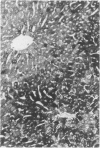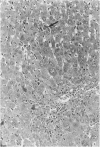Abstract
The LEC rat is an inbred mutant strain with spontaneous hepatitis isolated from Long-Evans rats. Since approximately 40% of LEC rats die of fulminant hepatitis, the rat serves an animal model for studying the pathogenesis and treatment of human fulminant hepatitis. The remaining 60% of LEC rats survive and develop chronic (prolonged) hepatitis and subsequently develop liver cancer. Therefore, the LEC rat serves an important animal model for studying the significance of chronic hepatitis in the development of human liver cancer, which often develops in association with chronic hepatitis. The LEC rat can also be used as an animal model of Wilson's disease, since recent studies have disclosed high copper accumulation in the liver and low ceruloplasmin concentration in the serum of this mutant rat.
Full text
PDF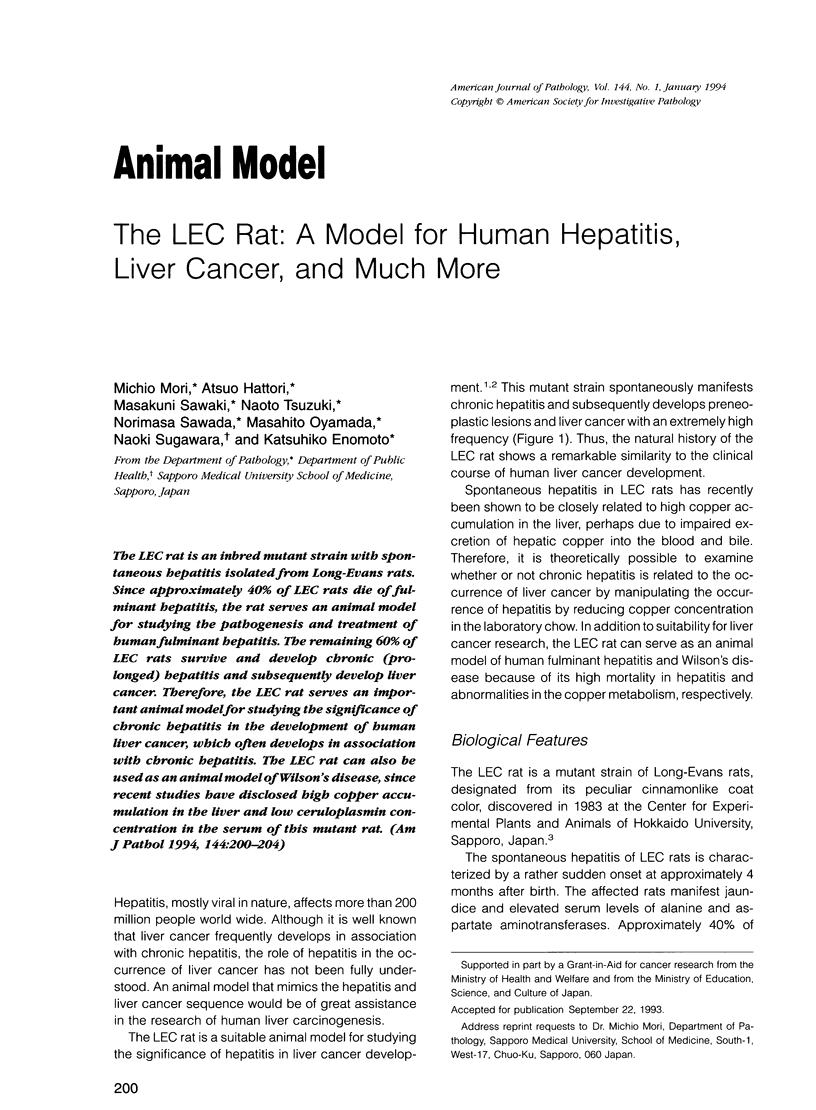
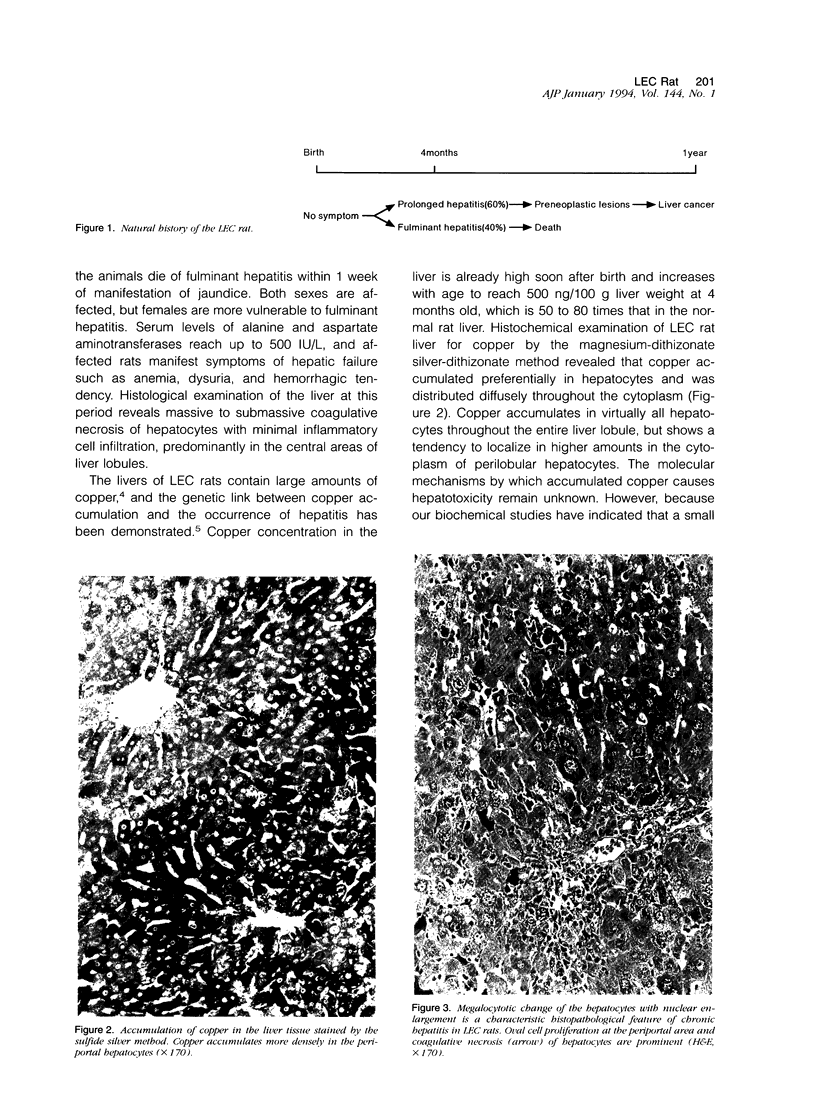
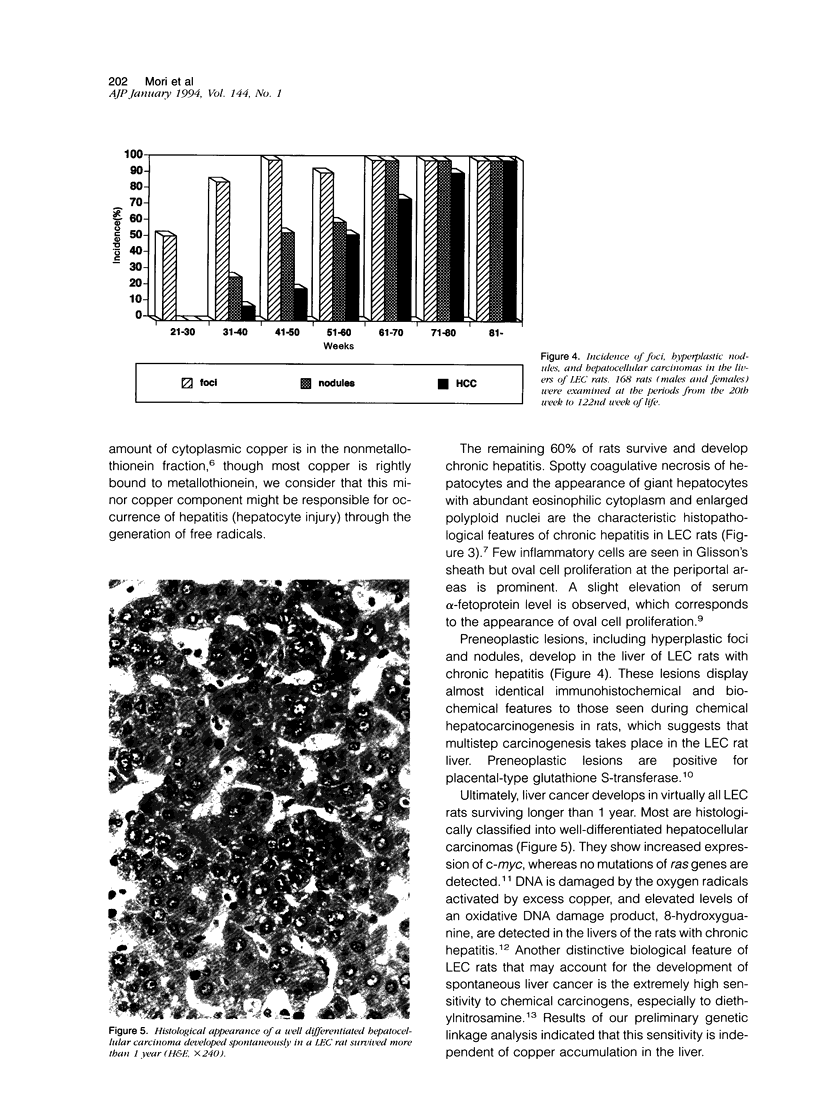
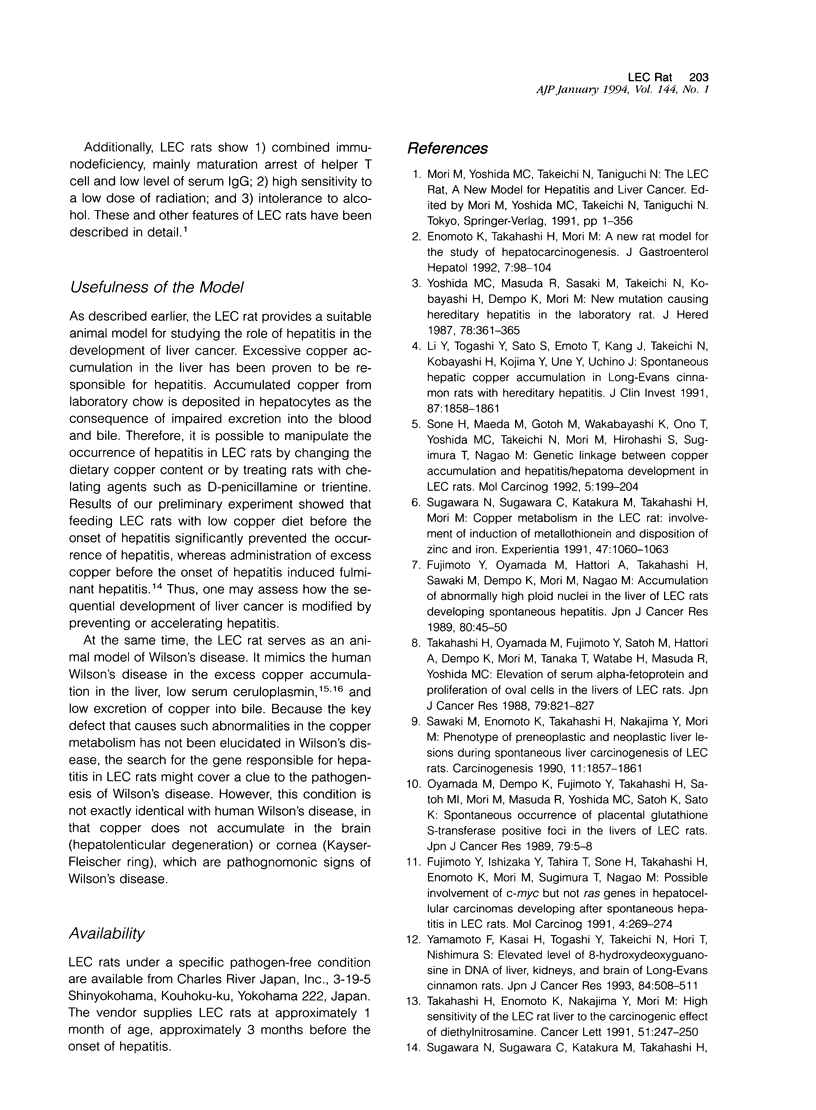

Images in this article
Selected References
These references are in PubMed. This may not be the complete list of references from this article.
- Enomoto K., Takahashi H., Mori M. A new rat model for the study of hepatocarcinogenesis. J Gastroenterol Hepatol. 1992 Jan-Feb;7(1):98–104. doi: 10.1111/j.1440-1746.1992.tb00941.x. [DOI] [PubMed] [Google Scholar]
- Fujimoto Y., Ishizaka Y., Tahira T., Sone H., Takahashi H., Enomoto K., Mori M., Sugimura T., Nagao M. Possible involvement of c-myc but not ras genes in hepatocellular carcinomas developing after spontaneous hepatitis in LEC rats. Mol Carcinog. 1991;4(4):269–274. doi: 10.1002/mc.2940040405. [DOI] [PubMed] [Google Scholar]
- Fujimoto Y., Oyamada M., Hattori A., Takahashi H., Sawaki M., Dempo K., Mori M., Nagao M. Accumulation of abnormally high ploid nuclei in the liver of LEC rats developing spontaneous hepatitis. Jpn J Cancer Res. 1989 Jan;80(1):45–50. doi: 10.1111/j.1349-7006.1989.tb02243.x. [DOI] [PMC free article] [PubMed] [Google Scholar]
- Li Y., Togashi Y., Sato S., Emoto T., Kang J. H., Takeichi N., Kobayashi H., Kojima Y., Une Y., Uchino J. Spontaneous hepatic copper accumulation in Long-Evans Cinnamon rats with hereditary hepatitis. A model of Wilson's disease. J Clin Invest. 1991 May;87(5):1858–1861. doi: 10.1172/JCI115208. [DOI] [PMC free article] [PubMed] [Google Scholar]
- Ono T., Abe S., Yoshida M. C. Hereditary low level of plasma ceruloplasmin in LEC rats associated with spontaneous development of hepatitis and liver cancer. Jpn J Cancer Res. 1991 May;82(5):486–489. doi: 10.1111/j.1349-7006.1991.tb01875.x. [DOI] [PMC free article] [PubMed] [Google Scholar]
- Oyamada M., Dempo K., Fujimoto Y., Takahashi H., Satoh M. I., Mori M., Masuda R., Yoshida M. C., Satoh K., Sato K. Spontaneous occurrence of placental glutathione S-transferase-positive foci in the livers of LEC rats. Jpn J Cancer Res. 1988 Jan;79(1):5–8. doi: 10.1111/j.1349-7006.1988.tb00002.x. [DOI] [PMC free article] [PubMed] [Google Scholar]
- Sawaki M., Enomoto K., Takahashi H., Nakajima Y., Mori M. Phenotype of preneoplastic and neoplastic liver lesions during spontaneous liver carcinogenesis of LEC rats. Carcinogenesis. 1990 Oct;11(10):1857–1861. doi: 10.1093/carcin/11.10.1857. [DOI] [PubMed] [Google Scholar]
- Sone H., Maeda M., Gotoh M., Wakabayashi K., Ono T., Yoshida M. C., Takeichi N., Mori M., Hirohashi S., Sugimura T. Genetic linkage between copper accumulation and hepatitis/hepatoma development in LEC rats. Mol Carcinog. 1992;5(3):199–204. doi: 10.1002/mc.2940050306. [DOI] [PubMed] [Google Scholar]
- Sugawara N., Sugawara C., Katakura M., Takahashi H., Mori M. Copper metabolism in the LEC rat: involvement of induction of metallothionein and disposition of zinc and iron. Experientia. 1991 Oct 15;47(10):1060–1063. doi: 10.1007/BF01923342. [DOI] [PubMed] [Google Scholar]
- Sugawara N., Sugawara C., Katakura M., Takahashi H., Mori M. Harmful effect of administration of copper on LEC rats. Res Commun Chem Pathol Pharmacol. 1991 Sep;73(3):289–297. [PubMed] [Google Scholar]
- Takahashi H., Enomoto K., Nakajima Y., Mori M. High sensitivity of the LEC rat liver to the carcinogenic effect of diethylnitrosamine. Cancer Lett. 1990 Jun 15;51(3):247–250. doi: 10.1016/0304-3835(90)90109-b. [DOI] [PubMed] [Google Scholar]
- Takahashi H., Oyamada M., Fujimoto Y., Satoh M. I., Hattori A., Dempo K., Mori M., Tanaka T., Watabe H., Masuda R. Elevation of serum alpha-fetoprotein and proliferation of oval cells in the livers of LEC rats. Jpn J Cancer Res. 1988 Jul;79(7):821–827. doi: 10.1111/j.1349-7006.1988.tb00043.x. [DOI] [PMC free article] [PubMed] [Google Scholar]
- Yamada T., Agui T., Suzuki Y., Sato M., Matsumoto K. Inhibition of the copper incorporation into ceruloplasmin leads to the deficiency in serum ceruloplasmin activity in Long-Evans cinnamon mutant rat. J Biol Chem. 1993 Apr 25;268(12):8965–8971. [PubMed] [Google Scholar]
- Yamamoto F., Kasai H., Togashi Y., Takeichi N., Hori T., Nishimura S. Elevated level of 8-hydroxydeoxyguanosine in DNA of liver, kidneys, and brain of Long-Evans Cinnamon rats. Jpn J Cancer Res. 1993 May;84(5):508–511. doi: 10.1111/j.1349-7006.1993.tb00168.x. [DOI] [PMC free article] [PubMed] [Google Scholar]
- Yoshida M. C., Masuda R., Sasaki M., Takeichi N., Kobayashi H., Dempo K., Mori M. New mutation causing hereditary hepatitis in the laboratory rat. J Hered. 1987 Nov-Dec;78(6):361–365. doi: 10.1093/oxfordjournals.jhered.a110416. [DOI] [PubMed] [Google Scholar]



